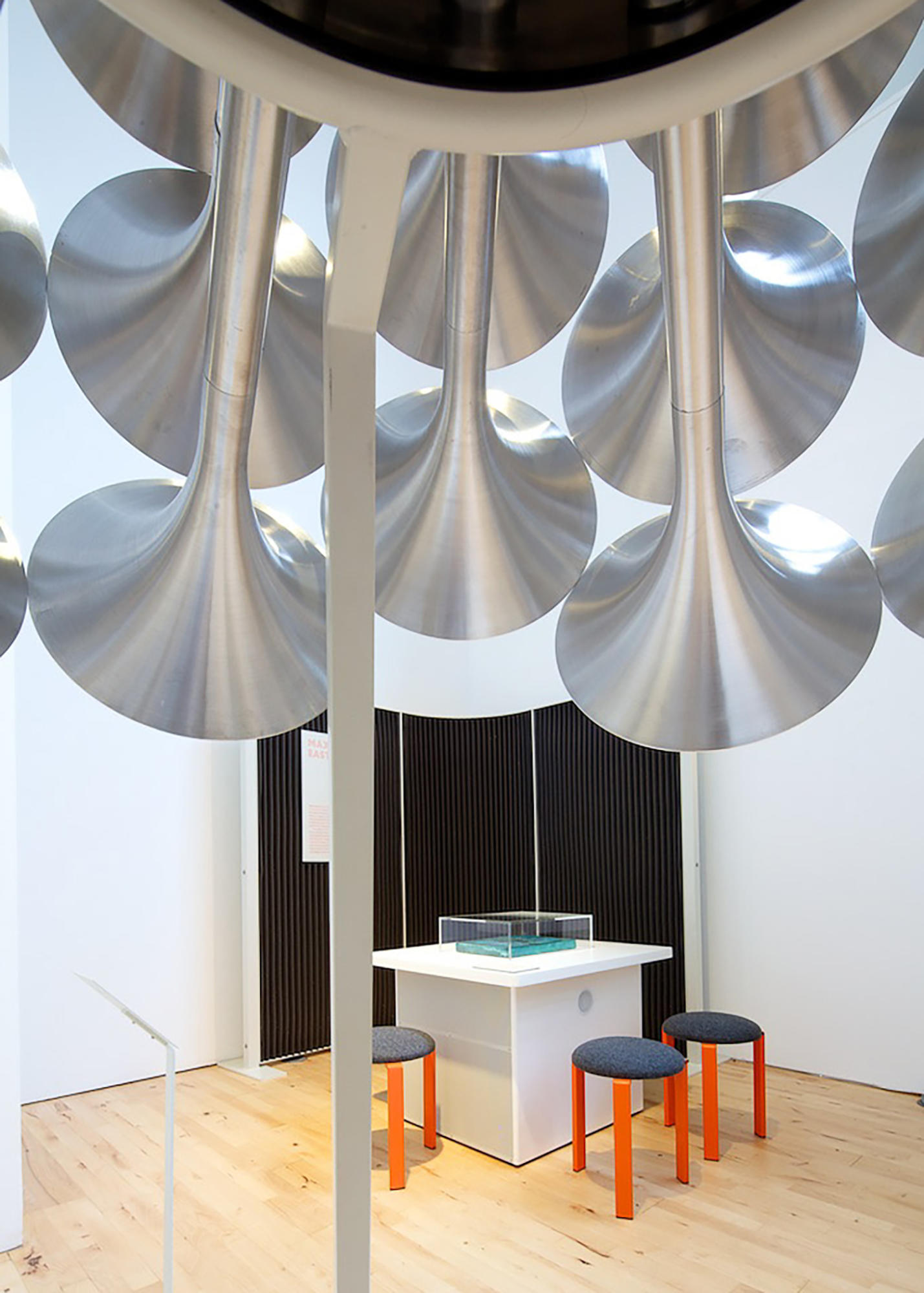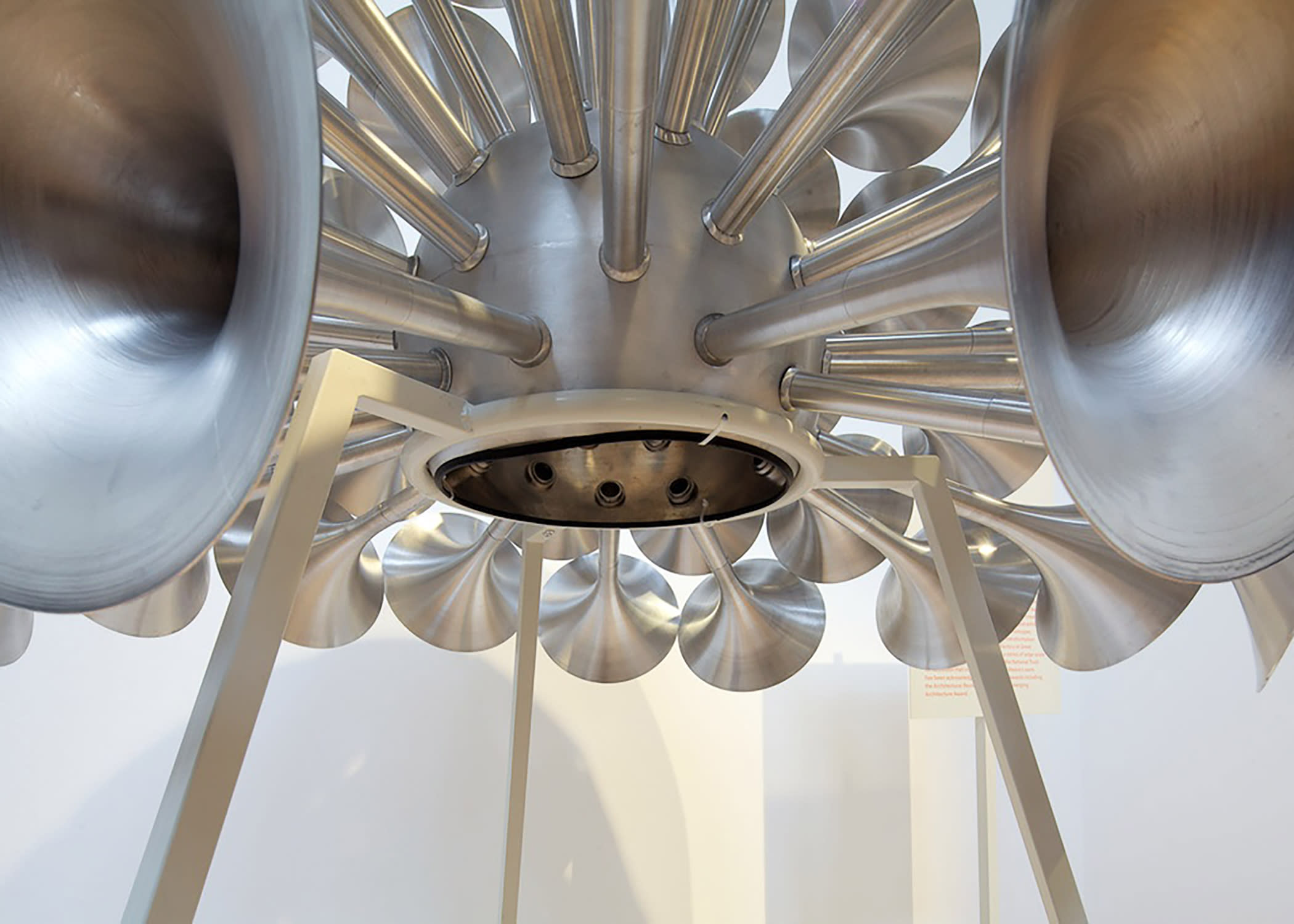Sound Matters
A large compound ear installation that separates and distinguishes the myriad sounds of our environment – touring the UK with the Crafts Council, in an exhibition of ‘sound and listening’ related works.
AB3 Workshops (Fabrication)




A large compound ear installation that separates and distinguishes the myriad sounds of our environment – touring the UK with the Crafts Council, in an exhibition of ‘sound and listening’ related works.
AB3 Workshops (Fabrication)
Polyphony was one of seven pieces commissioned for ‘Sound Matters’, an exhibition produced by the Crafts Council with Professor David Toop. The exhibition considered the connections between craft practice and sound art, and invited works that illustrate the ways in which these two distinct practices could collide.
- - -
Numerous listening horns, or auricles, are arranged across the large surface area of a sphere, and together capture sounds from different directions. By offering an acoustically buffered environment, the sounds of the surrounding exhibition and gallery are captured and amplified; the harvested sounds conjuring up a new soundscape.